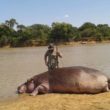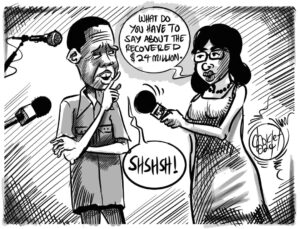The Lechwe population in the Kafue National Park has dropped by 5,000 since 2015 due to increased poaching, with numbers now standing at around 23,306, new data shows.
In a statement availed by Ministry of Tourism and Arts public relations officer Sakabilo Kalembwe, a survey conducted by the Department of National Parks and Wildlife and the World Wide Fund for Nature (WWF) found the Lechwe population in the Kafue National Park drop to 23,306 from 28,711 in 2015.
“The status of the Kafue Lechwe is seriously under threat from poaching. Preliminary reports of the 2018 Kafue Lechwe population count on the flats indicates a critical situation for the endemic species, which has recorded a decline of approximately 5,000 animals in three years. According to surveys conducted by the DNPW, with the support of WWF and International Crane Foundation (ICF), the Lechwe population that stood at 28,711 in 2015, now stands at 23, 306 animals,” the statement, released Thursday, read.
“The aim of the survey that was carried out in the second week of November, 2018, was meant to determine the population of the status of large herbivores, especially the Kafue Lechwe and also some water bird species, particularly the Wattled Cranes in the Lochnivar and Blue Lagoon National Park as well as the Kafue game management area. The survey carried a total area of 5,615 encompassing the two national parks.”
And data showed that the population of hippos had equally dropped by 800 from the last count.
“Meanwhile, the report on the 2018 count of the common Hippo on the Luangwa River reveals a decline of about 800 hippos from the previous count. The report indicates that the current population stands at 12,498 hippotami on a river stretch of 270Km. This is, however, still above the river’s carrying capacity. The total number of the hippos counted comprises of 331 schools and 116 solitary animals,” read the statement.












